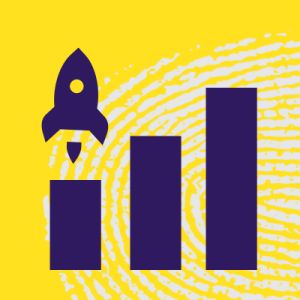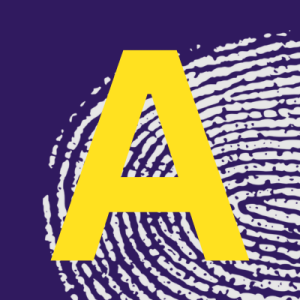In today’s dynamic workplace landscape, creating an inclusive culture has never been more important.
Diversity, equity and inclusion training and workshops can be a powerful accelerator. However rolling out training is not a one-size-fits-all endeavour; it requires a thoughtful, organisation-specific approach to drive lasting change.
I have learned a lot through our years of experience delivering high impact, game changing inclusive leadership and allyship programmes. Whilst the landscape keeps on changing as society slowly shifts, there are a number of considerations that will always be important. Here are some tips to ensure your training is tailored to resonate with your organisation and achieves meaningful impact.
1. Start with your business goals
When starting to consider diversity, equity and inclusion training, it’s essential to align the program with your business goals. Are you looking to meet compliance requirements or raise awareness, or are your key drivers cultural change, boosting engagement, or fostering high performance? Different training providers take varied approaches. Some focus solely on unconscious bias without empowering action, while others prioritize compliance, offering quick, cost-effective online courses that transfer key legal information. Some focus on the lived experiences of particular minoritized groups, however sometimes the business context can be missing.
At Diversily, for example, our focus is creating meaningful cultural transformation and driving inclusive, high performance.
2. Move Beyond One-Off Training
Traditional one-off training sessions are often insufficient in instigating lasting change. Inclusive leadership and allyship is a mindset and a culture that needs time to take root. Instead of a single event, implement a phased approach with multiple checkpoints. Regular feedback sessions during the rollout can provide valuable insights into the effectiveness of the content and whether it resonates with participants.
3. Establish Psychological Safety
Inclusive leadership and allyship training can evoke strong emotions, both positive and negative. Establishing psychological safety is foundational for impactful educational results. Plan session attendees carefully, consider group dynamics, and employ expert techniques to foster an environment conducive to growth and learning. Creating a safe space for participants encourages open dialogue, making it easier to address challenging topics and perspectives.
Psychological safety is the number one driver of team success. It is so important that we have a separate programme, that compliments our Inclusive Leadership programme at Diversily to help our clients with this fundamental topic.
4. Prioritise Experiential Learning
Diversity, equity, and inclusion are filled with terms and concepts that might be unfamiliar to participants. To prevent overwhelming your audience with conceptual materials, focus on creating experiential opportunities for growth. Engage participants emotionally, meet them where they are, and encourage personal reflections, authentic conversations, and vulnerability. By sharing real experiences, you create a platform for genuine understanding and motivate participants to embrace change.
5. Role Model Inclusive Behaviours
Facilitators play a pivotal role in setting the tone for inclusive leadership and allyship. Model inclusive behaviours by being curious and non-judgemental about participants’ perspectives and experiences. Ensure all voices are given an opportunity to be heard. This not only encourages a respectful learning environment but also demonstrates the values you want participants to embody in their roles and day to day behaviour.
6. Tailor Content to Your Organisation
One size does not fit all when it comes to inclusive leadership or allyship training. Every organisation has its unique culture, challenges, and strengths. Off-the-shelf training may not resonate as much as customised content that speaks directly to your organisation’s context. Ensure that the training includes quotes and examples specific to your company. This not only enhances relatability but also acknowledges the diverse experiences and perspectives within your organisation.
Understanding that individuals are at different points on their journey towards inclusive leadership and allyship is crucial. Tailoring the content allows you to address the specific needs of your workforce, making the training more engaging and relevant, as well as being geared to different roles or levels. By incorporating real-life examples and success stories from within your organisation, participants can better connect with the material and envision the positive impact of inclusion within their specific work environment.
This customisation not only demonstrates a commitment to the unique character of your organisation but also increases the likelihood that participants will internalise and apply the concepts learned during the training in their day-to-day roles. In essence, tailoring content to your organisation ensures that the training speaks directly to the hearts and minds of your workforce, making it a powerful catalyst for change.
7. Make Learners Accountable
What happens after the training, is what matters most. The goal of training is to inspire participants to become catalysts of change. This means empowering them by providing inspiration and practical tips that enable them to take action and implement changes in their daily roles. Accountability fosters a sense of responsibility and ensures that the principles learned during training are actively applied in the workplace. To really make a difference build specific inclusive goals into individual objectives. Create accountability groups and mechanisms for checking in, to share learnings and experiences, that persist long after the training programme is over.
8. Learn from others
While DEI training can be transformative, some approaches come with significant downsides. Compliance-focused programs, for instance, may only tick the legal box without fostering real understanding or change. These quick, cost-effective options often prioritise delivering surface-level information, which can leave participants disengaged and uninspired to act.
Similarly, unconscious bias training that lacks a focus on actionable steps may raise awareness but fail to empower individuals to change behaviors or create a more inclusive environment. In such cases, training can feel performative, leading to skepticism or even backlash from employees who view it as insincere or ineffective.
Training that focuses on lived experiences can be powerful, fostering empathy and raising awareness of the unique challenges faced by marginalized groups. However, if it doesn’t connect these experiences to the business context, its impact may be limited. Without a clear link to business goals—such as improving team collaboration, driving innovation, or increasing engagement—participants may struggle to see how these insights translate into actionable changes in the workplace. While the emotional impact of personal stories is valuable, for DEI training to truly be effective, it must also tie these experiences to how they affect business outcomes, workplace dynamics, and organizational success. Otherwise, it risks being seen as disconnected from daily work life and may not inspire the desired cultural or performance shifts.
Without a holistic, action-oriented approach, these programs risk reinforcing existing divides rather than bridging them.
Conclusion
In conclusion, rolling out inclusive leadership and allyship training is a multifaceted endeavour that requires strategic planning and a commitment to long-term change. By focusing on your business goals, moving beyond one-off sessions, establishing psychological safety, prioritising experiential learning, facilitating inclusive behaviours, tailoring content to your organisation, and making learners accountable, organisations can pave the way for a more inclusive and equitable workplace.
The goal is to create a sustainable and inclusive culture, and investing in the right places will lead to long-term positive change.
Learn more about our programmes
At Diversily some of our most popular programmes include:
- Inclusive Leadership
- Inclusive Teams & Allyship
- Psychological Safety





